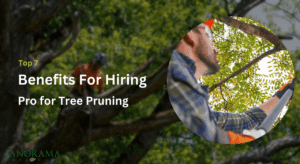Also known as halophytes, mangroves are a group of salt-tolerant trees and shrubs that thrive in areas with low-oxygen soil.
Any tree services experts can tell you how well mangroves are adapted to life in harsh coastal conditions. Florida alone has about 80 species of mangrove trees spread over 555,000 acres of land. That brings us to the question, “Can you trim mangroves?” Also, “can you remove mangroves in Florida?”
Well, a major percentage of Florida mangroves are protected by some kind of private ownership or government control.
These are expressly set aside for preservation and conservation purposes.
Know this before contacting a tree service
Whether they are red, black or white, mangroves in Florida can add to the value of your waterfront property. They are very beneficial for the land, the water as well as the wildlife.
To ensure compliance with Florida regulations and preserve your coastal ecosystem, trust certified mangrove tree trimming Tampa professionals like Panorama Tree Care who are trained in both environmental protection and precise tree management.
However, if you still wish to go ahead with mangrove trimming, here are 5 basic mangrove trimming rules you should be aware of.
These laws are implemented by the Florida Department of Environmental Protection.
Tree Height: tree pruning laws only permit homeowners to trim mangroves that are between 6 to 10 feet high. If the height of the tree is between ten and sixteen feet, you will have to call for professional mangrove trimming services. If they are below 6 feet, it is illegal to trim them. In case of trees that are taller than 16ft, they can only be trimmed in stages. And only 25% of annual tree removal is permitted in every stage. For more than 24ft tall trees, you would need a DEP authorization. Also, it is most important that none of the trees are completely removed, destroyed or defoliated. You are not allowed to cut any prop roots either.
Riparian Mangrove Fringe: If the mangroves on your property do not go more than 50 ft deep, you can trim them as per the above guidelines. However, this RMF designation is not applicable to areas are within certain conservation easements. The latter also includes certain mitigation areas and some types of public areas. Ideally, you should check with the local environmental officials before you start to trim your mangroves. This could prevent mistakes and save you from mangrove trimming fines.
Property Shoreline: You can trim up to 65% of mangroves if your property shoreline is more than 150 feet in length. However, in every case, you need to maintain the previous trimming and configuration. So, if the trees were trimmed legally by a removal company, you are allowed to trim again if you maintain the previous height. All other mangrove trimming and alternation would need a permit.
Exemptions/Government Authorizations: In many cases, surveyors or governmental entities provide various exemptions to general mangrove trimming rules. If your professionals did the trimming under these exemptions, you can maintain the same without a permit as long as the guidelines of the said exemption/authorization are not violated.
Location: Most important of the mangrove trimming rules is the location of the mangrove trees. First, they should be located on lands that you own or on state-owned sovereign submerged lands adjacent to your property. Second, the trees should not be in an area that is set aside for conservation, mitigation or preservation. After the trimming, your tree removal professionals should remove all the fallen branches and trunks. If required, you can call a company specializing in stump removal.
How is a qualified professional mangrove trimmer different from general tree service?
Even general tree service professionals can be qualified and certified mangrove trimmers. You need to look for:
Our certified mangrove trimming Tampa service ensures every cut follows DEP guidelines—so your property stays safe, compliant, and ecologically responsible.
- Arborists certified by the International Society of Arboriculture
- Licensed landscape architects
- Environmental professionals certified by the Academy of Board Certified Environmental Professionals
- Wetland scientists certified by the Society of Wetland Scientists
- Ecologists certified by the Ecological Society of America
- Professionals declared as mangrove trimmers by the Florida Dept. of Environmental Protection
What are the penalties for illegal mangrove trimming?
If you fail to adhere to the mangrove trimming rules, there are several penalties that could be applied. For a first-time violation, property owners are required to restore the area. In case of subsequent violations, mangrove trimming fines are applied. These range between $100- $250 per tree that has been illegally altered, trimmed or removed.
For detailed information about mangrove trimming rules and mangrove trimming fines, you can refer to the 1996 Mangrove Trimming and Preservation Act.
These rules and fines ensure the preservation of mangroves. It is important to understand how these trees contribute towards maintaining the ecology of an area.
- They stabilize the coastline, prevent soil erosion and reduce coastal flooding.
- They help protect wildlife species.
- They protect the water quality and provide habitat for the fish.
- Mangroves also help create 109,000 jobs in Florida thereby contributing up to $7.6 billion annually to the economy.
Therefore, it is not only illegal but also, unethical and environmentally dangerous to:
- Remove all or most of the mangrove leaves.
- Trim mangrove roots.
- Trim the trees that are below 6 feet in height.
- Removing the trees altogether.
Compliance to the mangrove trimming rules, therefore, makes you a responsible citizen and also keeps you safe from legal complications in the long run.
Need help navigating Florida’s strict mangrove regulations? Contact Panorama Tree Care today to schedule a professional mangrove consultation with our certified team and protect your property—legally and sustainably.







